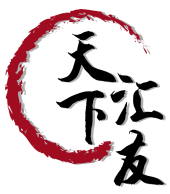
Cultural Activities
China is one of the Four Ancient Civilizations (alongside Babylon, India and Egypt), its culture and history spans for thousands of years. Culture and history have a big influence in the Chinese language, both written and spoken. Some important components of Chinese culture include ceramics, architecture, music, literature, martial arts, cuisine, visual arts, philosophy and religion.
At Capital Mandarin, we believe that in order to get the full Chinese experience, one must also learn a bit about the Chinese culture. As such we have prepared a series of fun cultural activities that will give students a glimpse of what our culture is like.
Below are some examples of what can be found in our cultural lessons:
Tai chi
Tai chi (太極拳 – tàijí quán) is one of the oldest forms of kung fu and is practiced for both its defense training and its health benefits. It is a great way to de-stress and regain one’s energy. Our lessons give the students a taste of what tai chi can be. Students learn the basic forms and a bit about it’s history and modern uses.
Chinese cooking lessons
Chinese food is famous all over the world, but you might be surprised by it’s diversity. Although dishes may look hard to make, there are many simple ones that are delicious at the same time. Students can learn to make some of the more famous Chinese dishes such as jiǎozi-饺子, bāozi-包子 or gōngbǎo jīdīng-宫保鸡丁 (Kung Pao Chicken), as well as traditional festival food such as yuèbǐng-月饼 (mooncakes) and zòngzi-粽子.
Traditional Chinese games
The Chinese have many varied traditional games. Some of them may seem familiar to you, but many others give us an interesting insight into another culture and are an excellent way of extending your studies on China.
- Májiàng-麻将 originated in China, but is now played all across the world and even has an annual international competition. Styles and rules of vary across China.
- Lǎoyīng zhuō xiǎojī-老鹰捉小鸡 (Hawk Catching The Young Chicks) is a typical kids game similar to tag, but with a different set of rules and players.
Chinese handicrafts
Chinese handicrafts are regarded as the treasure of Chinese traditional culture. They are largely derived from any sort of locally available material and depict people’s livelihood. Here are some of them:
- Paper cutting (jiānzhǐ – 剪纸) dates back to the second century A.D. in China. As paper became more affordable, paper-cutting became one of the most important types of Chinese folk art. Later, this art form spread to other parts of the world, with different regions adopting their own cultural styles. Because the cut-outs are often used to decorate doors and windows, they are sometimes referred to as ‘window flowers’ (chuāng huā – 窗花).
- Chinese calligraphy (Shūfǎ – 書法) and painting distinguish themselves from other cultural arts because they emphasize motion and are charged with dynamic life. Calligraphy has also led to the development of many forms of art in China, including seal carving, ornate paperweights, and inkstones.
- Beijing opera (jīngjù – 京剧) is a form of traditional Chinese theatre which combines music, vocal performance, mime, dance, and acrobatics. It arose in the late 18th century and became fully developed and recognized by the mid-19th century. Exaggerated designs are painted on each performer’s face (or mask) to symbolize a character’s personality, role, and fate. One know the story by observing the facial painting as well as the costumes. Generally, a red face represents loyalty and bravery; a black face, valor; yellow and white faces, duplicity; and golden and silver faces, mystery.














